Tactile input using different textures is so important for toddlers, preschool-age kids, and beyond. Enjoy various tactile play activities to engage the sense of touch and create sensory-rich experiences for your kids in any learning environment, home, or classroom. We love simple sensory play ideas!
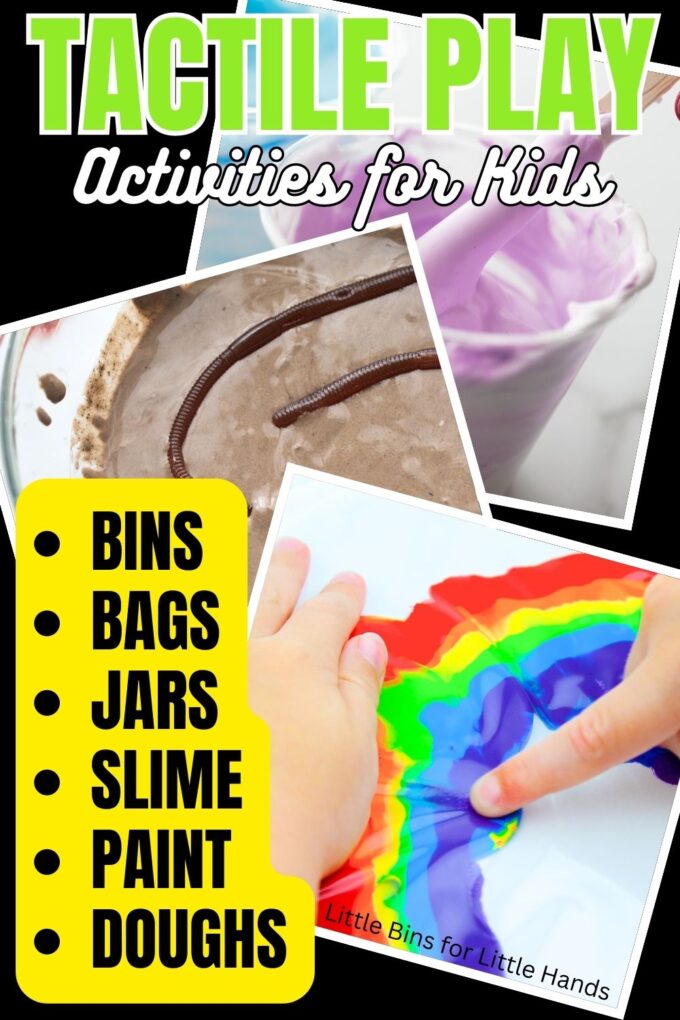
What is Tactile Play?
Tactile play is a type of play that engages the sense of touch. It is about what you can feel. For example, it includes textures, temperature, or even movement! Engaging in tactile play can help strengthen many skills, from socio-emotional development to fine motor skills!
Tactile play can be messy, but it doesn’t have to be! Think about how a child explores an object with their hands; they are engaging in tactile play. Not all of the tactile play ideas below are messy on the hands!
Some kids may be overly/underly sensitive to certain textures or materials, which can interfere with everyday functions. This is called tactile dysfunction and may be addressed through different types of therapy. Please reach out to your pediatrician if you have concerns!
Some kids will dig right in, and some will hesitate. But everyone can have a great play experience if you take the time to consider the best tactile play materials for your kids.
Tips For The Reluctant Child
The following ideas may help your child feel more comfortable with tactile sensory activities. Always remember not to push the play if your child seems very uncomfortable and you can not find a way to make it more appealing!
- Start with dry materials that won’t cling or stick to the hands (rice is perfect).
- Do the mixing of ingredients beforehand for less messy play.
- If your child hesitates to dig into these sensory activities, give him a big spoon, scoop, or tongs!
- Keep a bucket of water and towel close to rinse hands when needed.
Understanding the Tactile System
What is the tactile system? How do you “feel” things? Your hands, feet, mouth, skin (largest organ)…The nervous system is a complex network that sends signals from your skin to your brain and back again about the various textures and temperatures to create positive and negative feelings.
This tactile input is sent to the brain along various pathways that are all different, which may be why some textures are more tolerated than others! Some kiddos love the squishy feeling of slime, while some hate the feeling. Other kids love to squish in the mud and create a mess, whereas others prefer dry sand! Everyone’s tactile system s unique!
Our mouths and hands have the most touch receptors. Consequently, this is how young kids explore the world around them! Some kids may be overly sensitive to certain textures creating avoidance. In contrast, some kids may be under-sensitive, creating a seeking behavior.
How to Set Up Tactile Play Activities
Create hands-on tactile play activities with various sensory-rich textures for toddlers and preschool-age kids as they explore and learn about the world around them. Let’s go beyond play dough and whip up sensory recipes and easy sensory bin fillers.
What kinds of tactile play are there? Look for various messy and non-messy ideas, including taste-safe ideas too!
- Sensory Bins
- Sensory Recipes
- Homemade Playdoughs
- Sensory Balls
- Sensory Jars
- Squish Bags
- Homemade Paint
- Slime Recipes
Sensory Bins for Tactile Play
Unless you know your kids love messy play, I like to start with a dry sensory bin! If you have never made a sensory bin or need a refresher, start with our Sensory Bin Guide. Below is a sampling of tactile play activities you can easily set up at home or in the classroom.
Scoops, tongs, spoons, funnels, and a tray or bin are all you need to get started! Add small objects or toys, such as plastic animals or vehicles, to encourage exploration.
Dry Sensory Bins
These are most often fillers for our sensory bins. We have various sensory bin fillers that include both food and nonfood options. Sand, aquarium gravel, rice, birdseed, pom poms, and coffee beans are great options. There are many more, including paper, fake grass, wooden beads, and dried beans/lentils! See all of our Non-Food Sensory Bin Fillers.
- Rice (plain or dyed)
- Sand (Craft and Moldable)
- Aquarium Gravel
- Whole Coffee Beans
- Birdseed
- Pom Poms
- Colored Pasta
- Colored Salt
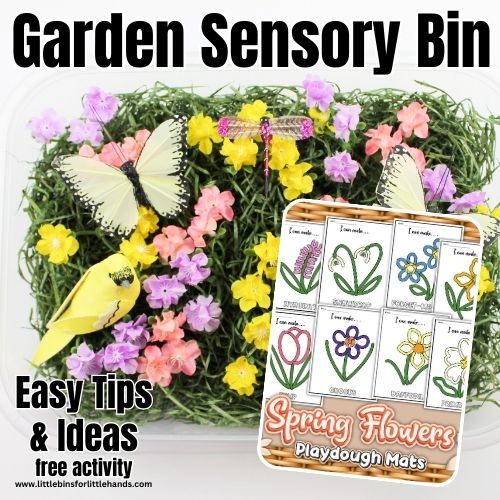
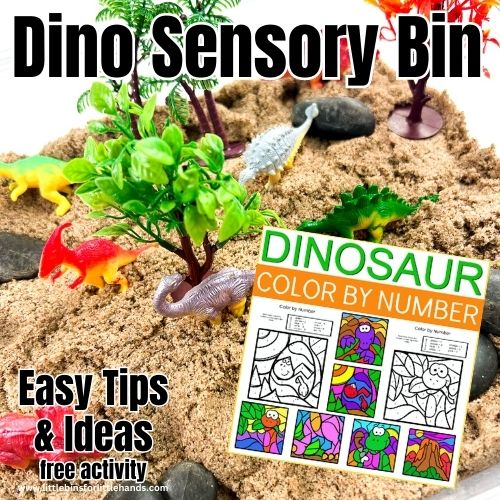
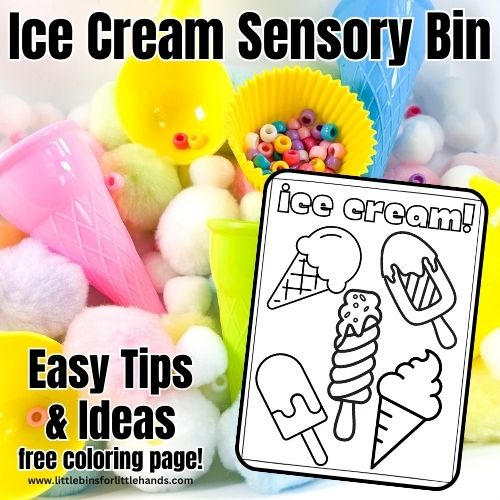
Messy Sensory Bins or Trays
Messy sensory play can start with a simple water sensory bin. Messy sensory play materials can heighten the tactile sensory experience with textures and temperature and even the movement of them. You can also make many great sensory recipes, including:
- Water and ice (wet and temperature)
- Rainbow Spaghetti (medium messy but a little slimy)
- Soap Foam (soap bubbles!)
- Chick Pea Foam (messy)
- DIY Kinetic Sand (less messy)
- Cloud Dough with Flour and Oil (less messy, taste-safe)

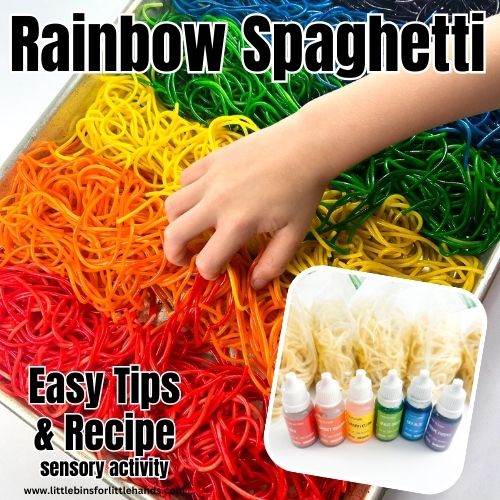
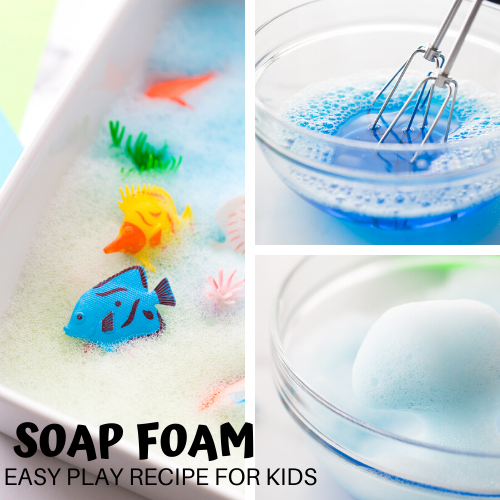
Sensory Recipes for Tactile Play
Tactile play activities usually include these sensory recipes that tend to be wetter from adding water, oil, or shaving cream. As a result, they will be messier to the touch. Some are listed under messy sensory bins.
- Sand Foam (shaving cream, very messy)
- Magic Mud (very messy)
- Clean Mud (very messy)
- Sand Dough (less messy)
- Dirt and Water (real messy mud)
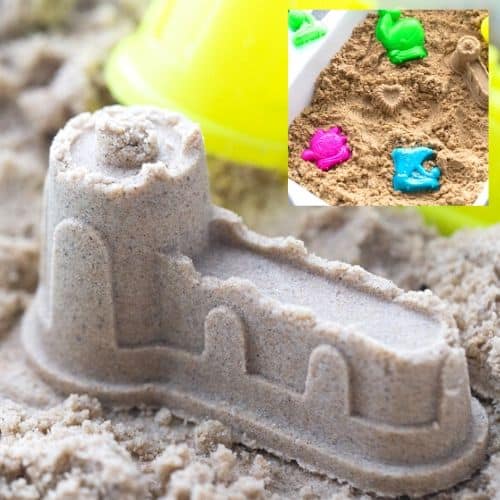
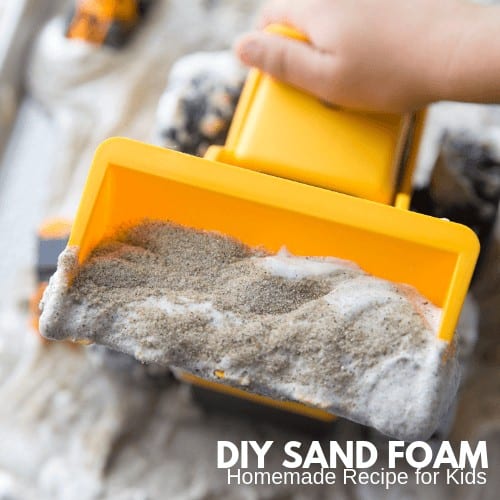
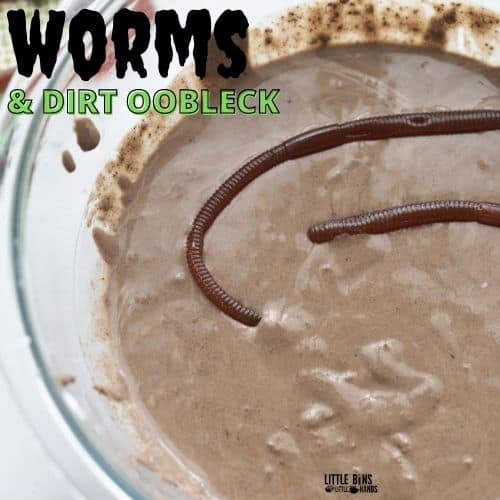
Homemade Playdough
Check out our complete collection of homemade playdough recipes, from no-cook playdough to our popular fairy dough. Homemade playdough can be an easy, mess-free sensory activity for kids. Plus, we have plenty of free playdough mats to add to the activity.
Here are three quick and simple playdough recipes.
Cornstarch Dough
Only 2 ingredients make this homemade cornstarch dough easy to whip up and fun for kids to play with.
Fairy Dough
A sprinkle of glitter and soft colors makes this amazingly soft fairy dough come to life!
Foam Dough
Just 2 ingredients make this fun and squishy tactile play for kids.
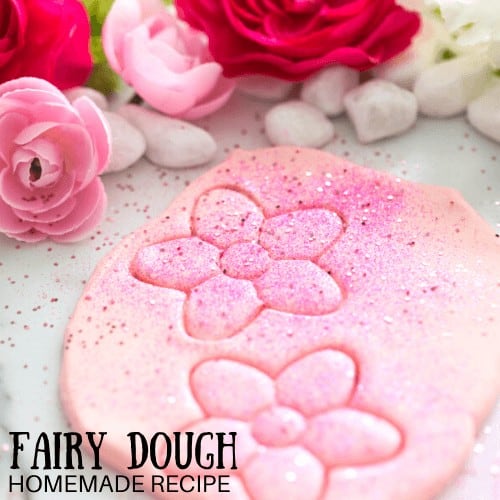
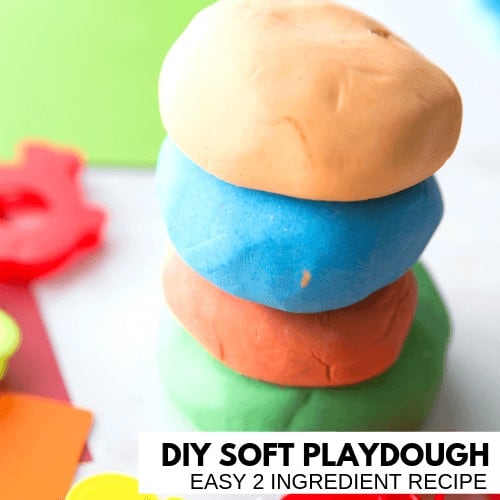
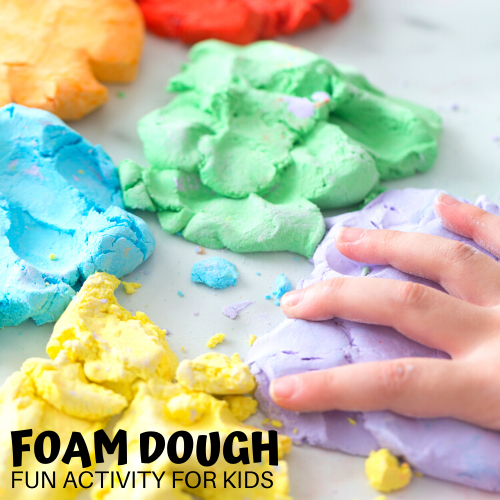
Homemade Paint
Painting and art can be a tactile experience for kids too! Find various homemade paint recipes that are easy to make and non-toxic in addition to the ones below!
Sensory Stress Balls
Stress balls or sensory balloons are fun to play with and so easy to make. They are surprisingly tough and can take a good squeeze. Flour or cornstarch are fantastic fillers. See how to make homemade stress balls and watch the video.
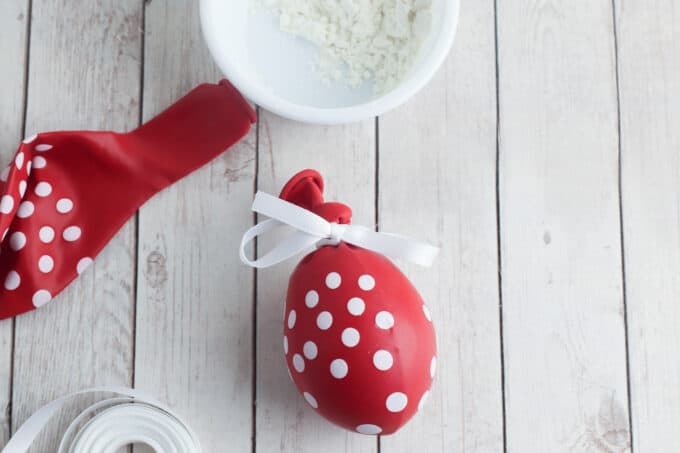
Sensory Bags for Tactile Play
Another way to enjoy messy tactile play without the mess is with a squish bag!
Activity Idea: You can fill a squish bag with thick liquids like the green hair gel below. Add google eyes and draw circles on the bag. Kids can squish or push the google eyes into the circles!
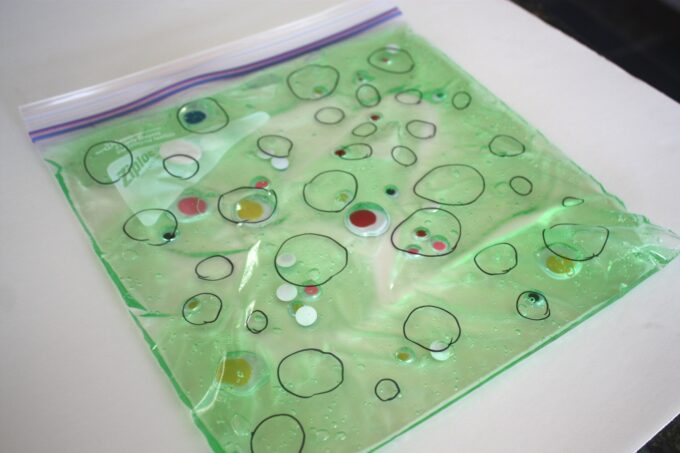
TIP: If your kid is an energetic squisher, seal the top with wide masking tape. You can even tape the bag to a table or window for toddlers!
Pant, shaving cream, conditioner, and even pumpkin work well too! Try the squish bags below and add fun themes for seasons and holidays.
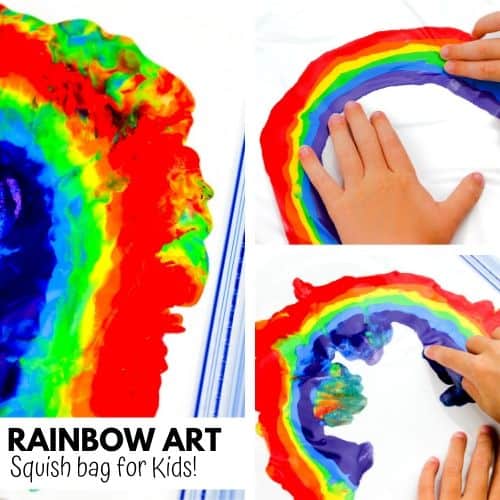

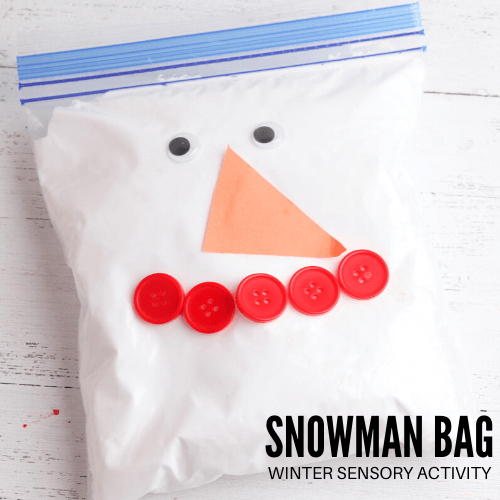
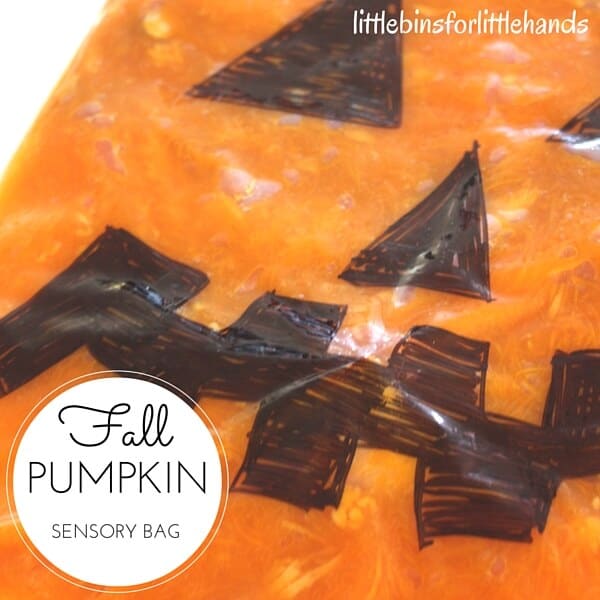
Sensory Jars
While you may consider sensory jars as more visual stimulation, there are other things to consider! The weight of a sensory bottle may feel calming to a kid, and the temperature of the liquids.
You can easily set up a preschool tactile science experiment exploring warm, cold, and room temperature. Plus, kids can make fantastic observations about how the temperatures of the bottles will change over time!
Activity: Grab several jars or bottles with tightly closing lids. Add cold water, ice cubes, warm water (test temperature so it is not too hot!), and room temperature water to each bottle or jar. Spend some time feeling the bottles and making observations. Check on the bottles at regular intervals and discuss the changes!
Homemade Slime
Learn how to make slime here! While we have dozens of fantastic homemade slime recipes, it’s best to start with the basics! Each slime activator has an easy slime recipe. Fluffy slime with shaving cream is always a fantastic tactile play activity.
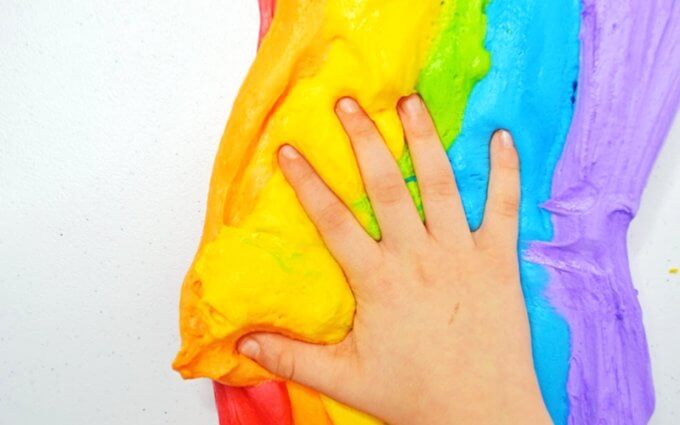
More Tactile Play Activities
Many of our toddler and preschool science activities feature much tactile play. Remember, young kids learn about the world around them through their senses!
Tactile Early Learning Play
LEGO bricks are a fun way to add tactile play to early learning! Grab that bin of bricks or Duplo and have fun with letters, numbers, and shapes with this printable LEGO activities pack.



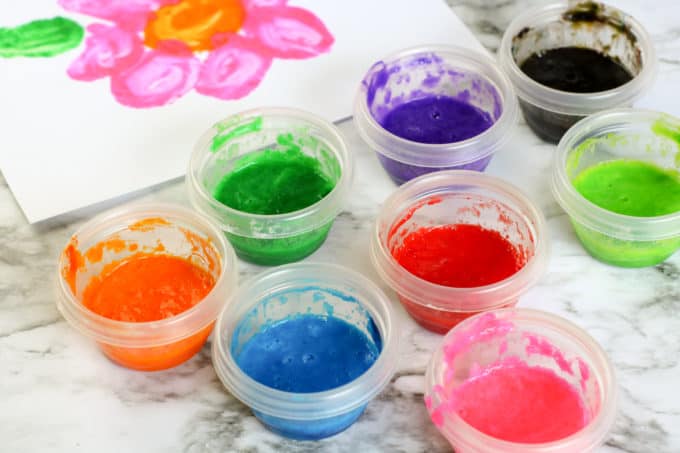







Appreciating the time and effort you put into your blog and
in depth information you provide. It’s awesome to come across a blog every once in a while
that isn’t the same old rehashed material. Wonderful read!
I’ve bookmarked your site and I’m adding your RSS feeds to my Google account.